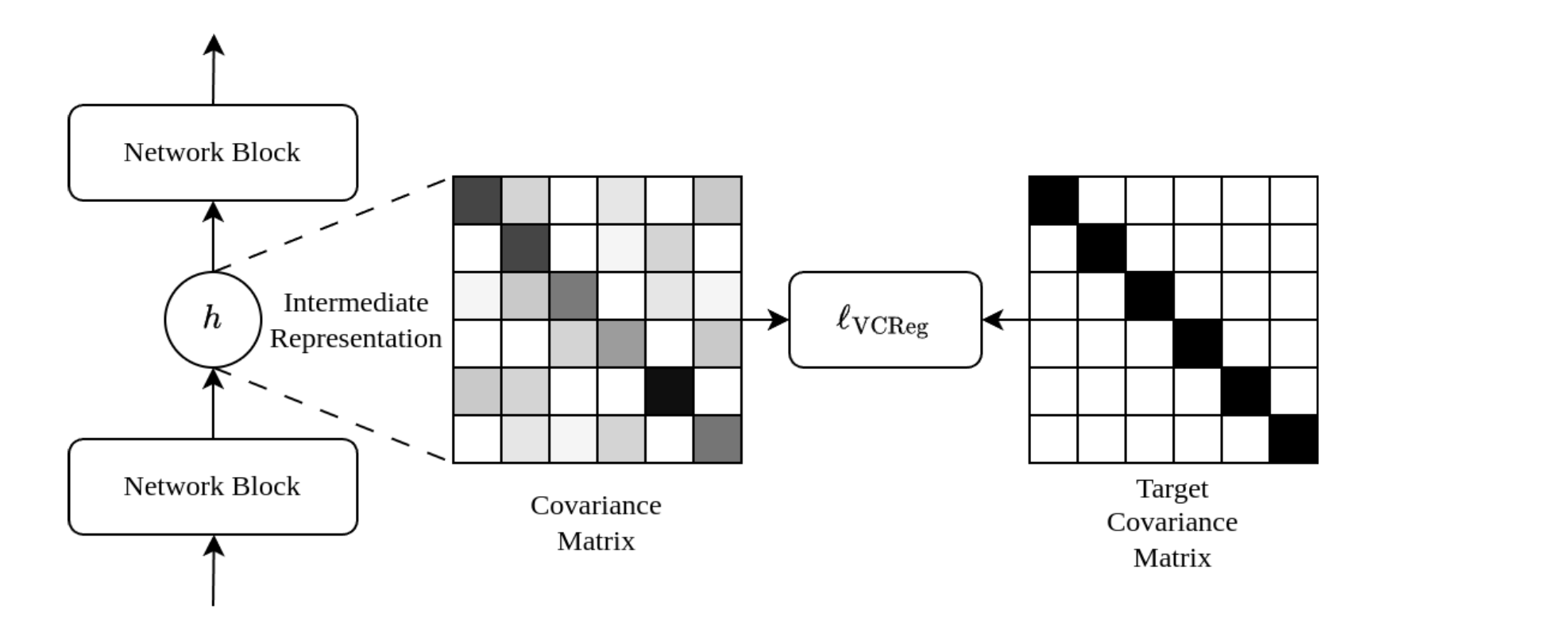Variance-Invariance-Covariance Regularization
Sources:
- VICReg 2022 paper
- VC Reg, a follow-up paper of VICReg

Image source: https://arxiv.org/pdf/2306.13292
Variance-Invariance-Covariance Regularization
Self-supervised learning methods aim to learn meaningful representations without relying on labels. VICReg (Variance-Invariance-Covariance Regularization) is one such method, which learns representations by optimizing three key objectives: maintaining variance, reducing covariance, and ensuring invariance between augmented views of the same input.
In this article, we focus solely on the core idea of VICReg—the design of its loss function—excluding discussions about network architectures and implementation details.
Notation
| Symbol | Type | Description |
|---|---|---|
| The |
||
| Two augmented versions of the original input |
||
| Function | Neural network parameterized by |
|
| Representations of |
||
| Batch embeddings for augmented inputs, where |
||
| The |
||
| Variance-covariance matrix of |
||
| Variance of the |
||
| Threshold for variance regularization (e.g., |
||
| Overall VICReg loss function | ||
| Variance loss, covariance loss, and invariance loss, respectively | ||
| Hyperparameters controlling the weight of variance, covariance, and invariance terms |
Abbreviations
| Abbreviation | Description |
|---|---|
| VICReg | Variance-Invariance-Covariance Regularization |
| Cov | Covariance |
| Var | Variance |
| NN | Neural network |
Problem setting
We consider a batch of data
where
where
The variance-covariance matrix of
Expanding this:
VICReg loss
VICReg optimizes three goals:
High Variance: Encourage
Low Covariance: Minimize off-diagonal elements of
Invariance: Ensure embeddings
The overall VICReg loss:
My comment
Invariance term is contrastive learning. Other two terms are heuristic tricks.
In the original paper,